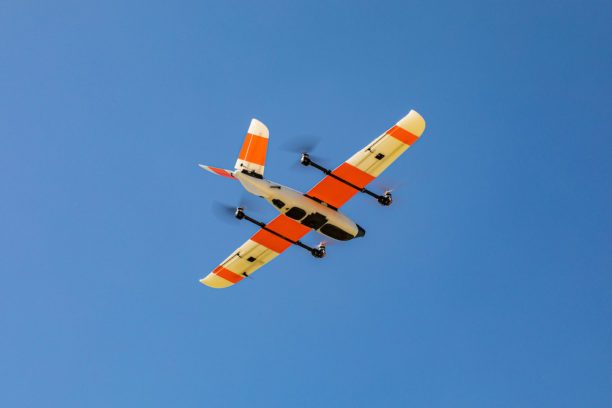The “Leading Innovation in Flight Technology (LIFT) Act,” introduced by Rep.Jen Kiggans (R-VA) on July 24, 2025, aims to accelerate U.S. rules for Beyond Visual Line of Sight (BVLOS) drone operations. The measure would compel the Department of Transportation (DOT) and Federal Aviation Administration (FAA) to set clear performance standards, use artificial intelligence to speed approvals, and fund local-government drone programs. According to a story on FOX Digital, Kiggans framed the bill as essential to keep US drone manufacturing moving forward.
A Congressional Push to Break Through Regulatory Barriers
Rep. Jen Kiggans (R-VA) has introduced new legislation designed to accelerate beyond visual line of sight (BVLOS) drone operations, targeting key regulatory bottlenecks that have long frustrated the commercial drone industry. The LIFT Act, introduced in the House on July 24, 2025, represents the latest congressional effort to push federal agencies toward establishing clearer rules for expanded drone operations
The bill comes at a critical time when drone operators across industries—from emergency response to infrastructure inspection—continue to face lengthy waiver processes that limit the scalability of their operations.
What the LIFT Act Would Do
According to the story on FOX Digital, the legislation would require Transportation Secretary Sean Duffy to establish performance and safety standards for BVLOS operations and review current aviation standards that were originally designed with manned aircraft in mind. The bill also includes several innovative provisions aimed at modernizing the approval process.
One of the most notable aspects of the legislation is its requirement for the Transportation Secretary to deploy artificial intelligence to assist with processing waiver applications for civilian drones to fly BVLOS. This technological integration could potentially address one of the industry’s biggest complaints: the slow, cumbersome nature of the current waiver system administered by the Federal Aviation Administration (FAA).
“China builds five times as many drones as we do here in America,” Kiggans told FOX Digital, framing the legislation as a competitive necessity. Her comments reflect broader industry concerns about U.S. compet bill also establishes a new pilot program to offer grants to state and local governments for drone programs, ensuring smaller governmental entities aren’t left out of advanced air mobility developments.
Industry Context: Years of Regulatory Delays
The LIFT Act emerges against a backdrop of repeated missed deadlines for comprehensive BVLOS regulations. Under current rules, most drones cannot fly beyond visual line of sight without individual FAA waivers—a process that industry operators describe as costly and time-consuming.
The FAA was originally mandated by the FAA Reauthorization Act of 2024 to issue a notice of proposed rulemaking for BVLOS operations by September 2024. That deadline passed without action. President Trump’s June 2025 executive order “Unleashing American Drone Dominance” then required the FAA to issue a proposed rule within 30 days, but that deadline also went unmet.
This regulatory uncertainty has created significant challenges for drone operators seeking to implement large-scale BVLOS operations. According to a recent Office of Inspector General report, the core issue isn’t a lack of effort but execution—the FAA’s current waiver process wasn’t built for scale and struggles with the growing volume of BVLOS applications.
Technical and Safety Considerations
The push for BVLOS operations centers on one fundamental challenge: replacing the “see and avoid” capability that human pilots provide. Current regulations require remote pilots to maintain visual contact with their aircraft, either directly or through visual observers—a requirement that severely limits operational range and utility.
Industry experts have identified detect-and-avoid (DAA) systems as crucial technology for safe BVLOS operations. These systems must perform the equivalent function of human vision, detecting other aircraft, obstacles, and terrain hazards. However, developing reliable DAA technology that meets regulatory standards has proven complex and expensive.
The anticipated Part 108 regulations, which would establish comprehensive BVLOS standards, are expected to mandate robust DAA systems, secure communication links, and enhanced pilot training. Part 108 would represent a significant shift from the current Part 107 framework, moving oversight from individual pilots to corporate entities and enabling routine BVLOS operations without case-by-case waivers.
Congressional Pressure as Regulatory Strategy
Kiggans acknowledged that the LIFT Act serves partially as a pressure mechanism. “Sometimes putting that in writing, something from Congress, kind of will motivate them to actually get it done,” she told FOX Digital. This approach reflects congressional frustration with the pace of FAA rulemaking on drone issues.
The legislation is designed to codify transportation portions of Trump’s executive order on drone dominance, providing statutory backing for regulatory directives. By requiring specific actions and timelines, Congress aims to create accountability mechanisms that have been lacking in previous efforts.
Global Competitive Pressures
The competitive framing of Kiggans’ legislation reflects broader industry concerns about international competitiveness. While countries like China have rapidly expanded their drone industries, the U.S. has struggled with regulatory frameworks that industry advocates argue stifle innovation and deployment.
The patchwork of international BVLOS regulations creates additional challenges for U.S. companies seeking to scale operations globally. Some countries have established clearer pathways for BVLOS approvals, while others maintain restrictive approaches similar to the current U.S. system.
Looking Ahead: Implementation Challenges
Even if the LIFT Act passes, significant implementation challenges remain. Developing AI systems for waiver processing, establishing performance standards, and creating grant programs for local governments will require substantial resources and coordination across multiple agencies. In fact, while the LIFT Act encourages the use of AI, a group of Senators recently sent a letter to the FAA questioning the use of AI for analysis amid staffing cuts.
The drone industry has been waiting for comprehensive BVLOS regulations for years, with some companies shuttering operations while waiting for regulatory clarity. The success of the LIFT Act will largely depend on whether it can break through the organizational and resource constraints that have delayed previous rulemaking efforts.
It’s important to note that the final text of the LIFT Act is not yet publicly available, as the bill is still working through the initial congressional publication process.
The legislation represents another attempt to address one of the most persistent challenges in commercial drone operations. Whether it succeeds in accelerating regulatory progress will depend on factors ranging from agency resources to broader political priorities. For an industry that has long awaited regulatory certainty, the LIFT Act offers both hope and another reminder of the complex path toward expanded drone operations in U.S. airspace.


Miriam McNabb is the Editor-in-Chief of DRONELIFE and CEO of JobForDrones, a professional drone services marketplace, and a fascinated observer of the emerging drone industry and the regulatory environment for drones. Miriam has penned over 3,000 articles focused on the commercial drone space and is an international speaker and recognized figure in the industry. Miriam has a degree from the University of Chicago and over 20 years of experience in high tech sales and marketing for new technologies.
For drone industry consulting or writing, Email Miriam.
TWITTER:@spaldingbarker
Subscribe to DroneLife here.


